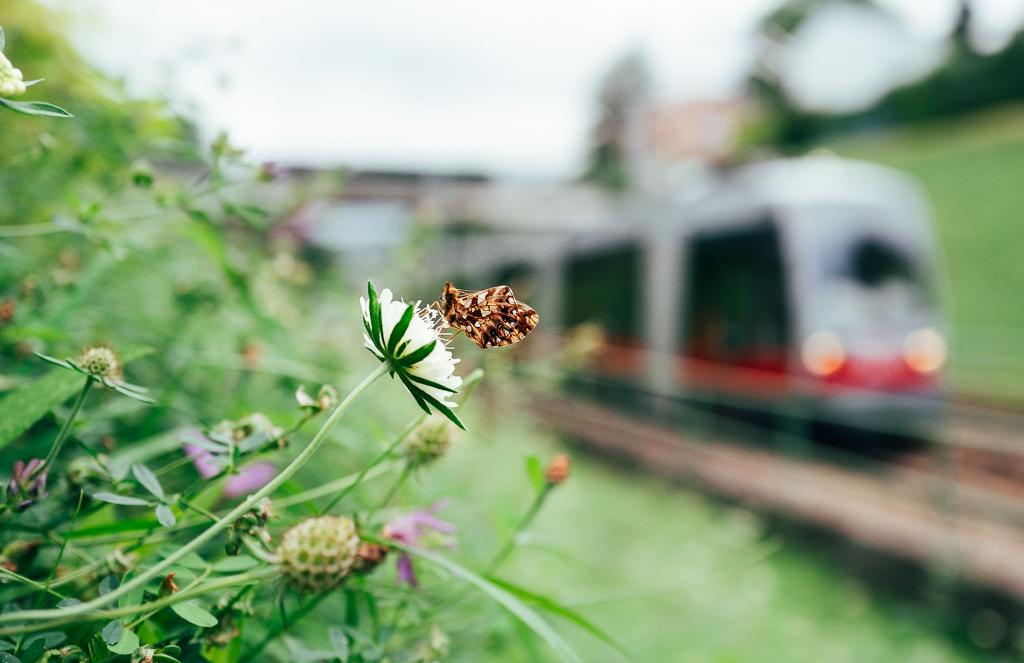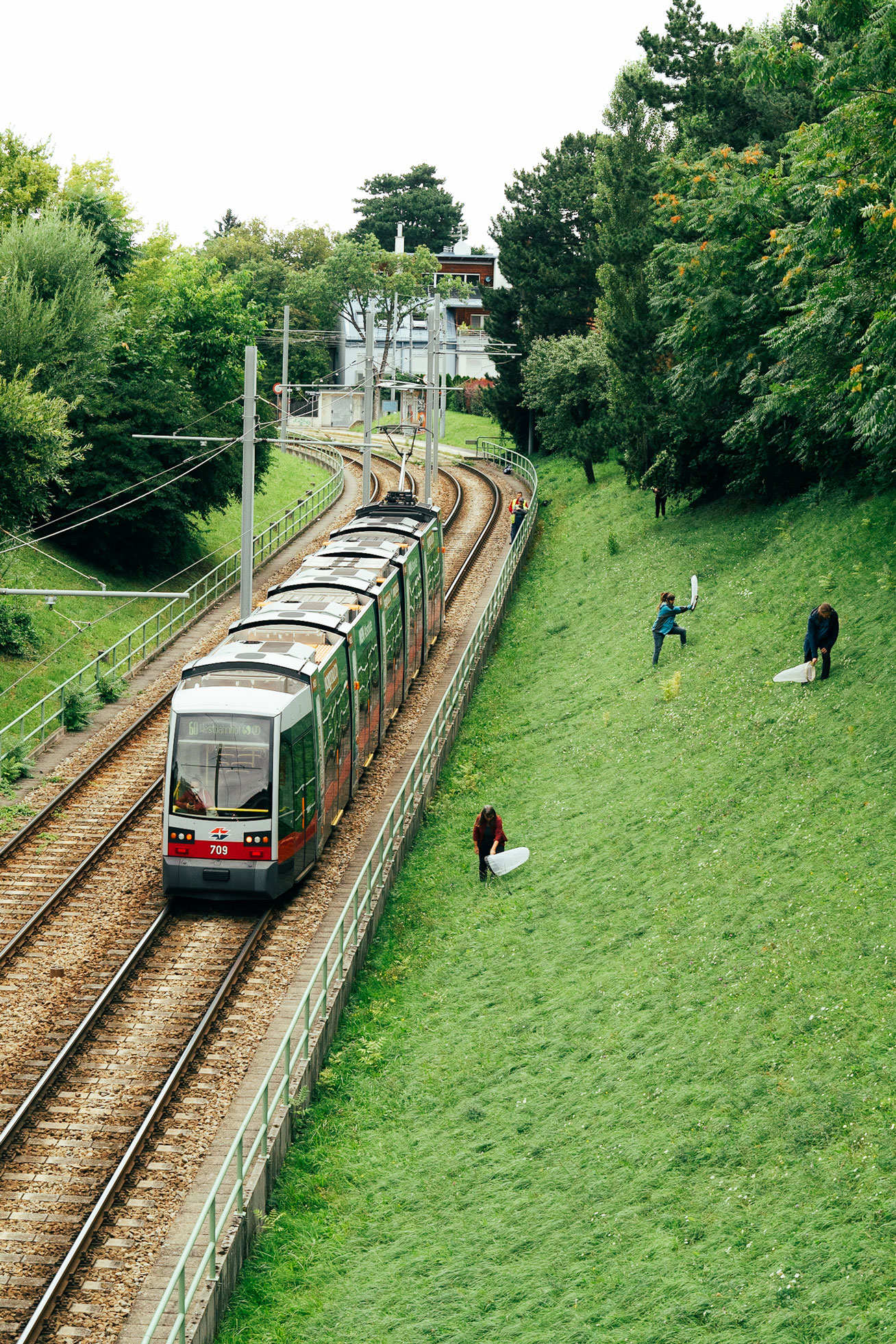Thessaloniki gets ready for its metro launch in November
The underground rapid transit lines have been under construction for almost two decades due to various project delays
 TheMayor.EU logo
TheMayor.EU logo 
The researchers found rare and exciting species near the tracks , Source: Alexander Zalokar via City of Vienna
The city announced the development of a new project for the separate management of these green spaces as a place where insects and plants can flourish undisturbed
Vienna authorities announced the results of a study into the impact of the green lanes on the Wiener Linien on the biodiversity of the city. With this, the local government will be able to draft a management strategy for the spaces, turning them into ever-growing biodiversity havens in the future.
The research team from the University of Natural Resources and Life Sciences looked at the flora and fauna congregating in 25 green public transport spaces along the tracks of the subway as well as tram lines.
Wiener Linien pays special attention to caring for the green spaces by the tracks, especially as they are a landmark feature of Vienna’s cityscape. They are also home to a large number of different animal and plant species. The scientific research team was able to detect around 378 plant species, as well as 25 kinds of grasshoppers, 40 types of butterflies (including seven endangered species) and 155 wild bee species in the study area of almost 3.7 hectares.
 The green spaces near tram and subway lines in Vienna
The green spaces near tram and subway lines in Vienna
are unique spaces for biodiversity.
Source: Alexander Zalokar via City of Vienna
Some of the more exciting species the researchers found include the bee Lasioglossum Costulatum, a specimen so rare, it has been sighted only twice in Austria before, with the last time being 48 years ago. Another one is the warmth-loving Italian locust, which, according to the project manager Bärbel Pachinger, feel particularly at home near the tram tracks.
According to Pachinger, the researchers have affectionately dubbed the grasshoppers 'Wiener Linien Schrecke' (Viennese track grasshoppers).
The main point behind the study was to examine the micro-climate conditions in every one of the green spaces separately, to determine what is the right type of care it needs to foster and strengthen biodiversity.
Some of their conclusions include the recommendation that the spaces are mowed less often. Another is introducing specific plant types to push out invasive species. The end goal of the maintenance plan for the Wiener Linen green spaces is to create a regular paradise for bees and other insects.
Pachinger was quoted in a press release saying: "Wild bees are essential for climate protection because they make a major contribution to the pollination of a wide variety of plant species."
The Wiener Linien Managing Director, Günter Steinbauer added that the project is particularly close to heart for the city: "The diversity of insects has come under great pressure due to the lack of habitats and climate change. Improved maintenance of the Wiener Linien areas can make a significant contribution to helping our plants and animals in the city. The network of public transport should become the network of biodiversity".

The underground rapid transit lines have been under construction for almost two decades due to various project delays

Now you can get your wine in Talence by paying directly in Bitcoin

That’s because the state has to spend money on updating the railway infrastructure rather than subsidizing the cost of the popular pass

Rethinking renewable energy sources for the urban landscape

The examples, compiled by Beyond Fossil Fuels, can inform and inspire communities and entrepreneurs that still feel trepidation at the prospect of energy transition

Now you can get your wine in Talence by paying directly in Bitcoin

The 10th European Conference on Sustainable Cities and Towns (ESCT) sets the stage for stronger cooperation between the EU, national and local level to fast track Europe's transition to climate neutrality.

At least, that’s the promise made by the mayor of Paris, Anne Hidalgo

The underground rapid transit lines have been under construction for almost two decades due to various project delays

At least, that’s the promise made by the mayor of Paris, Anne Hidalgo

Hostal de Pinós is located in the geographical centre of the autonomous region

Despite its church-y name, the district has long been known as the hangout spot for the artsy crowds

Urban dwellers across the EU are having a say in making their surroundings friendlier to people and the environment.

Forests in the EU can help green the European construction industry and bolster a continent-wide push for architectural improvements.

Apply by 10 November and do your part for the transformation of European public spaces

An interview with the Mayor of a Polish city that seeks to reinvent itself

An interview with the newly elected ICLEI President and Mayor of Malmö

A conversation with the Mayor of Lisbon about the spirit and dimensions of innovation present in the Portuguese capital














